UNESCO’s Jardin Japonais: Garden of Peace
Last November I attended the 17th General Assembly and Scientific Symposium of the International Council on Monuments and Sites (ICOMOS) held at the Paris headquarters of UNESCO (the United Nations Educational and Scientific Organization). The event provided an opportunity to learn about current international cultural and heritage landscape initiatives, network with colleagues from around the world and spend a week in Paris at that magical time of year when the city prepares for the holiday season.
The theme of the symposium was Heritage the Driver of Development with an emphasis on how, in a changing, increasingly interdependent world, cultural identity and heritage, in both the physical and intangible environment, is impacted. Simply put, how can new development coexist (and enhance) the past in a world where everything is beginning to look and feel the same?
UNESCO’s mission is to contribute to the building of peace, the eradication of poverty, sustainable development and intercultural dialogue through education, the sciences, culture, communication and information. Among other functions UNESCO oversees the World Heritage List which currently includes 962 cultural and natural properties of outstanding value to humanity. In the United States Independence Hall, Monticello. the University of Virginia and Yellowstone National Park are among the sites listed; as of now not one site in New England is included. To learn more about world heritage sites visit: http://whc.unesco.org/en/list.
The quote below, from World Heritage Cultural Landscapes: A UNESCO Flagship Programme, 1992 – 2006 by Mechtild Rossler and attributed to Beresford, M. & Phillips A. from “Protected landscapes: a conservation model for the 21st century,” is a particularly apt, concise statement describing the need for landscape preservation and protection.
“Despite humankind’s continued best efforts to destroy magnificent landscapes, devastate natural habitats and extinguish our fellow species, the world is still full of many stunningly beautiful places, rich in biological and cultural and biological diversity.”
Fittingly, the UNESCO building complex was designed collaboratively by an international team of architects, artists, industrial designers and builders. Sited on seven and half acres, the property harmoniously blends architecture and art throughout, deftly synthesizing works by the leading practitioners of twentieth century art in a celebration of UNESCO’s mission.
The buildings were designed by “three architects from three countries” Marcel Breuer of the United States, Pier Luigi Nervi of Italy and Bernard Zehrfuss of France. An international panel of five architects: Lucio Costa (Brazil), Walter Gropius (United States), Charles Le Corbusier (France), Sven Markelius (Sweden) and Ernesto Rogers (Italy) were involved as consultants to the project as was American architect Eero Saarinen.
The image below is a “General Plan of UNESCO Headquarters, Paris, France” from 1950, by architect Marcel Breuer. Annotations mark the placement for art works by Jean Arp, Alexander Calder, Joan Miro, Henry Moore and Rufino Tamayo. The Garden of Peace by sculptor Isamu Noguchi is circled in the upper right hand corner.
The blueprint, from the collection of the Smithsonian’s Archives of American Art is from an exhibit, Marcel Breuer: A Centennial Celebration, held in 2002.To view other images from the exhibit visit: http://www.aaa.si.edu/exhibitions/marcel-breuer-centennial.
While the grounds of the complex are graced with an extraordinary collection of sculpture, the Garden of Peace (Jardin de la Paix), designed by Japanese – American sculptor Isamu Noguchi, is acknowledged to be one of the most influential projects in the field of landscape architecture in the twentieth century. A masterful synthesis of zen garden tradition and abstract formalism, influenced by Noguchi’s engagement with modern art, the design of the garden enhanced Noguchi’s international reputation and informed his later work.
UNESCO describes the garden as ” of great historical significance being the first created by a sculptor rather than a gardener.” Noguchi was assisted in the garden’s execution by Toemon Sano, a highly regarded Japanese garden master. To learn more about Noguchi and his work visit the site of the Noguchi Museum: http://www.noguchi.org.
Begun in 1952 and completed three years later, the garden reflects Noguchi’s personal design aesthetic and Japanese heritage. As such the garden has been the topic of continued discourse regarding the authenticity of its Japanese design. Landscape historian John Dixon Hunt in the book A World of Gardens concludes, “That the UNESCO garden promoted strong debate about both its “Japanese-ness” and its modernity was inevitable…exacerbated by the international scope of UNESCO and the internal squabbles about the garden.”
If like me you are trying to reconcile the idea of “squabbling” about the design of a peace garden sited on the grounds of an organization dedicated to intercultural dialogue and cooperation, a visit to the garden will dispel any lingering fragments of acrimony. For those who visit or use the space daily, the garden provides both ceremonial and contemplative features allowing for enlightened discourse or meditative calm removed from the world’s distractions. The simple beauty and harmony of the design supersede concern about the garden’s “Japanese-ness” or past disagreements.
UNESCO acknowledges that the garden differs from a traditional Japanese garden in the following ways; it can be viewed as a whole by visitors; contains three axes; uses non-traditional materials (such as asphalt) and design elements; the upkeep does not allow for interpretation on a daily basis and in its design expression human creativity takes precedence over nature.
In November of 1958 the UNESCO Courier published a special issue on the organization’s new world headquarters with an article on “The Garden of Peace” containing photographs,a plan and text by Noguchi detailing his intent for the garden. It is fortunate to have such a clear statement by the artist describing the design as well as the image below detailing Noguchi’s plan.
Gardens for UNESCO, Paris, 1956-1958 (Isamu Noguchi)
(c) The Isamu Noguchi Foundation and Garden Museum, New York
“My original commission was to design the upper patio. The lower garden came about following my suggestion that this area would be enhanced by the inclusion of greenery which could be gained by including the adjoining sunken area as a part of a general plan. This is how the roadway came into being as a means of achieving this interrelation of great changes in level. It serves the same purpose as the Japanese veranda (roka) for viewing the garden. In theatrical terms, it is like the “flowery path” or bridge of entry (hanamichi).
The lower garden is often referred to as the “Japanese garden”. In my estimation, it would be almost more correct to say that the truly Japanese part is that which is least obviously so. It is true that I have paid a more obvious homage to the Japanese garden In the lower area. This follows the nature of the commission, and because of the very generous gift of all the stones from Japan.
To learn but still to control, not to be overwhelmed by so strong a tradition, ¡s a challenge. My effort was to find a way to link that ritual of rocks which comes down to us through the Japanese from the dawn of history to our modern times and needs. In Japan the worship of stones changed into an appreciation of nature. The search for the essence of sculpture seems to carry me to the same end.
This is an ambulatory garden, the enjoyment of which is enhanced by walking In it whereby one perceives the relative value of all things.
The raised paved area in the centre of the lower garden recalls the upper patio. One arrives on it and departs from it again with time barriers of stepping stones between it is the land of voyage, the place for dancing and music which may be viewed from all around the garden and from all levels of the surrounding buildings.
I have included two very old chosubachi or water basins in deference to the quality of age (shibui) which is so much a part of the Japanese garden. Everything else was both designed and executed by me.”
The pictures below shows the sympathetic relationship between the materials (mainly concrete) and forms used for the building’s details and those Noguchi uses in the plaza/patio area.
After reading about the debate regarding the authenticity of the garden’s Japanese pedigree, I became curious about how and when Noguchi’s project became a peace garden. Noguchi expanded his original project to design the delegate’s patio area – was there always an intent to create a peace garden or was it his idea?
In the 1958 edition of the UNESCO Courier quoted above the garden is clearly described as a Garden of Peace as well as a Japanese garden with an ” invitation to meditation.” There also exist specific references to individual design elements with the garden, including the Peace Fountain, the largest stone in the garden that is sited in a rectangular pool with “water cascading over Noguchi’s mirror-image Japanese inspired calligraphy for the word peace.”
The plantings and design elements include dwarf cherry, plum and magnolia trees (sadly not in bloom during my visit) bamboo trees, 80 tons of rocks, a small stream, little lake, bridge and flowers. These are described as “represent (ing) the harmony between nature and the acts of mankind.”
One of the earliest peace gardens I could locate is in London. Built for the 1910 Japanese British exhibition, Heiwa- en is deemed the oldest traditional Japanese garden in a public place in Britain. The garden was restored in 2010, one hundred year after its design. To read about the gardens restoration visit: http://www.japantimes.co.jp/text/nn20080902f4.html.
Visits to UNESCO headquarters, located at 7 Place Fontenoy, 7th arr. must be arranged in advance. For information regarding arranging a tour visit: http://www.unesco.org.
Copyright © 2012 Patrice Todisco — All Rights Reserved

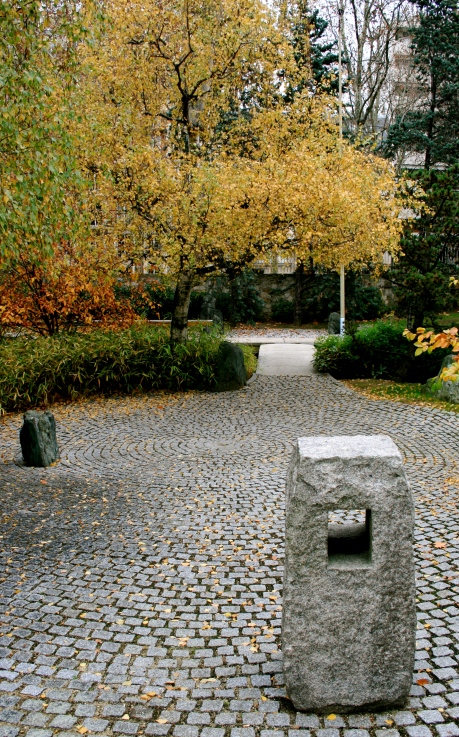
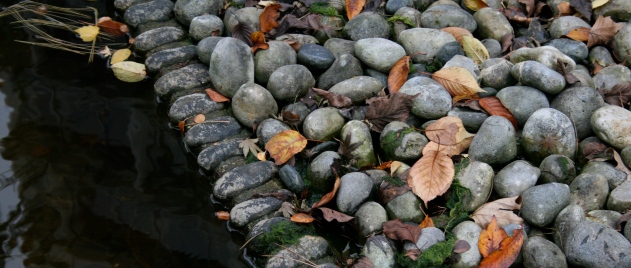

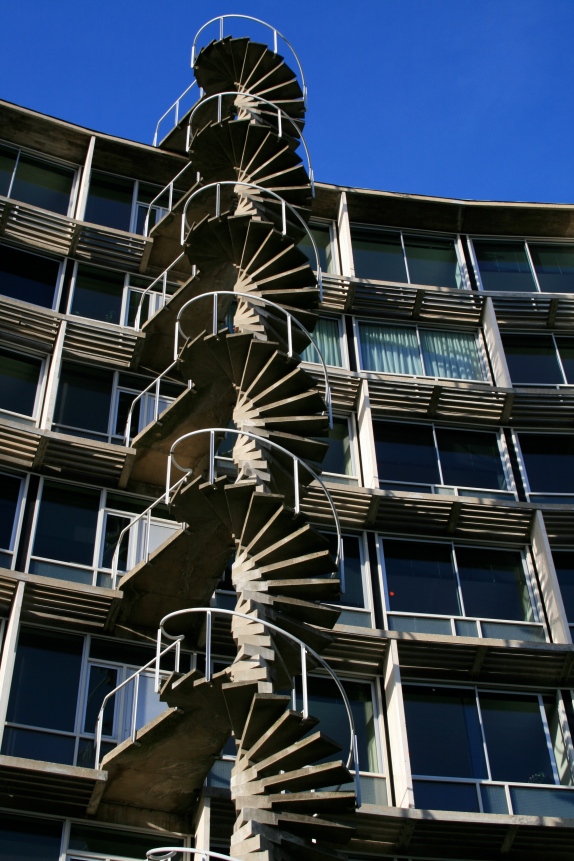
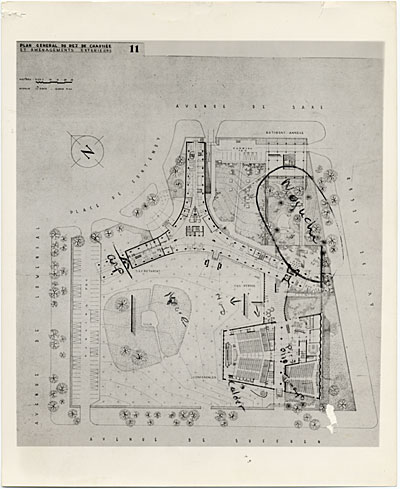
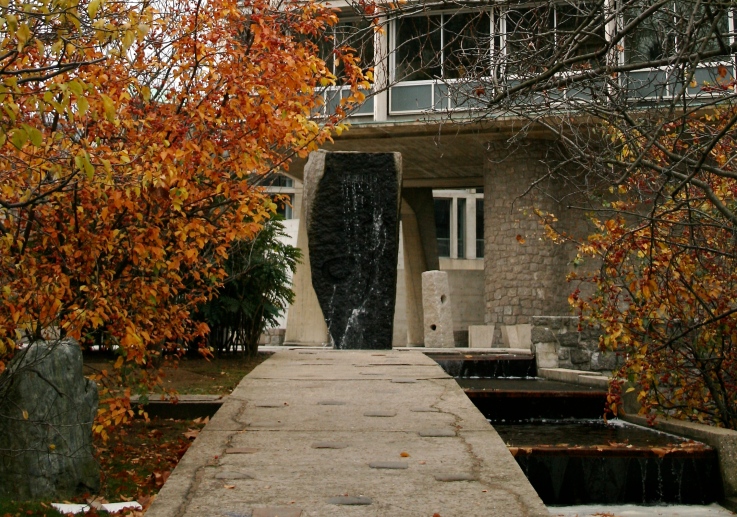
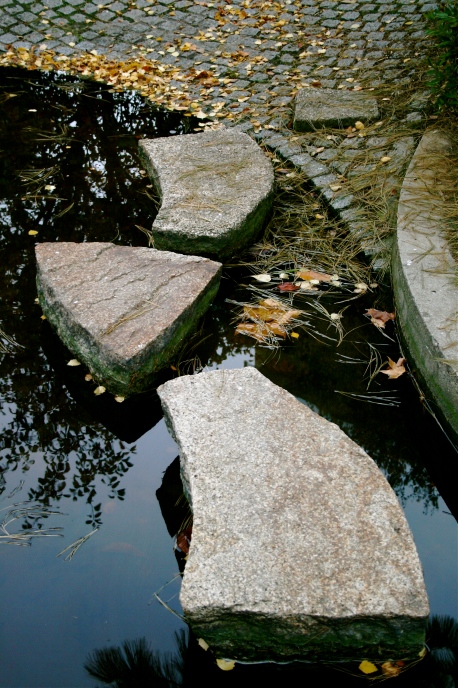
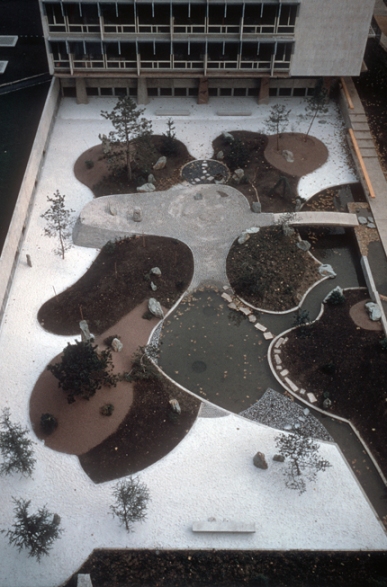
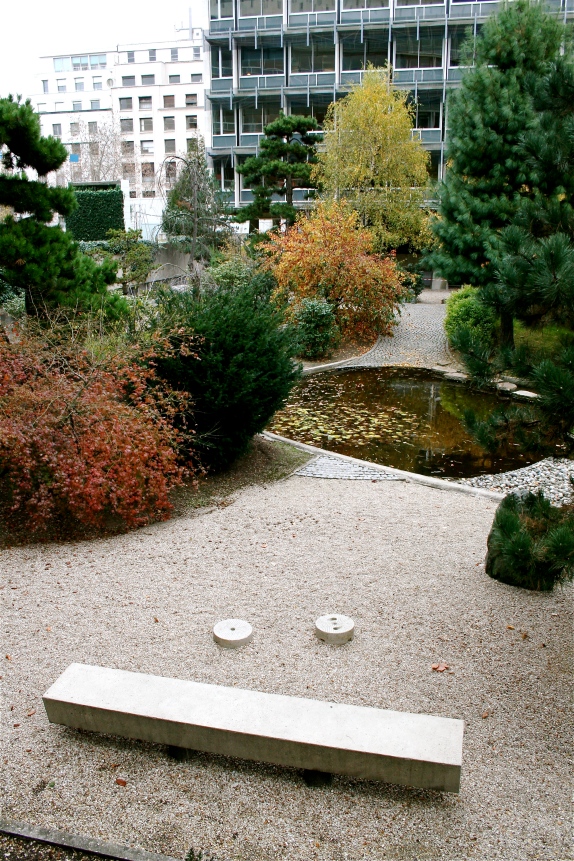
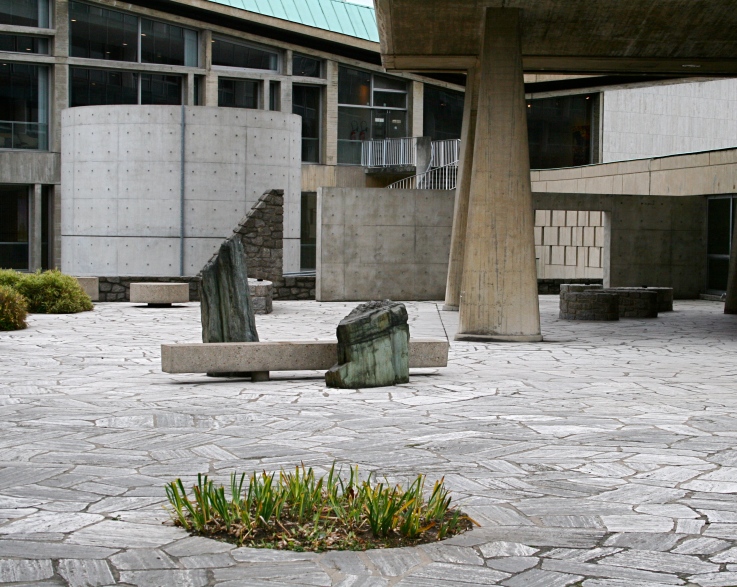
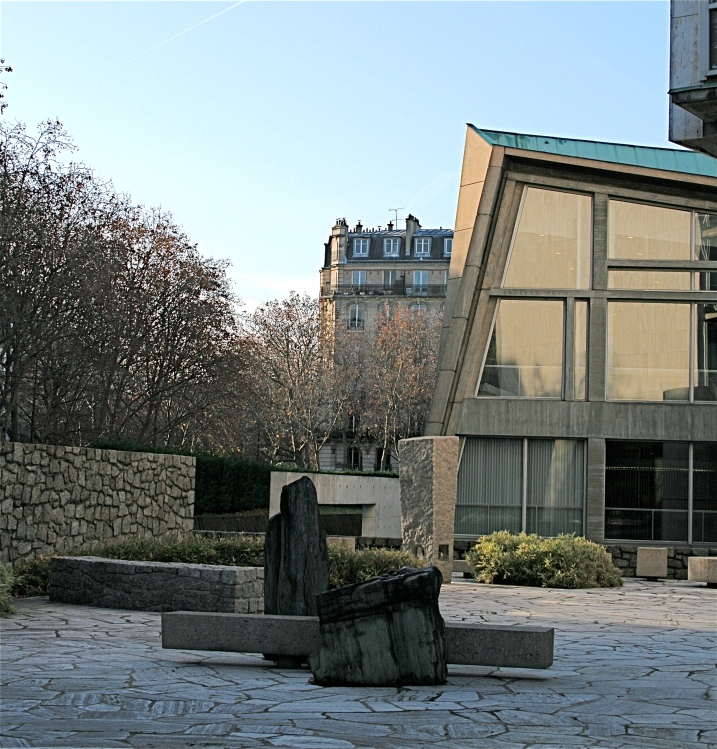
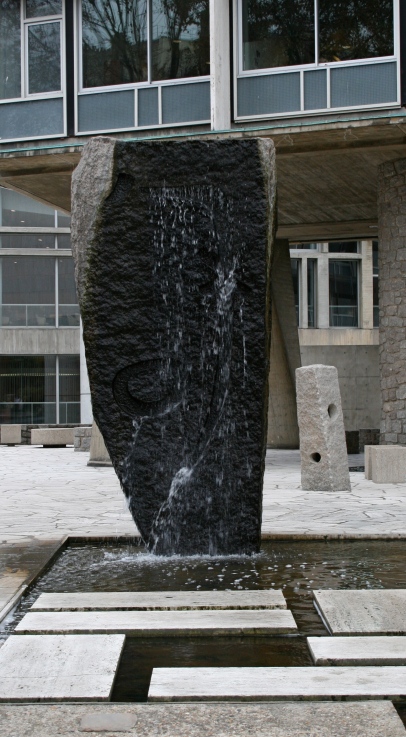
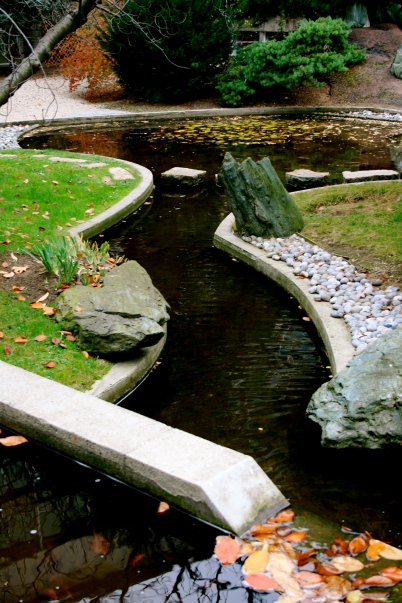
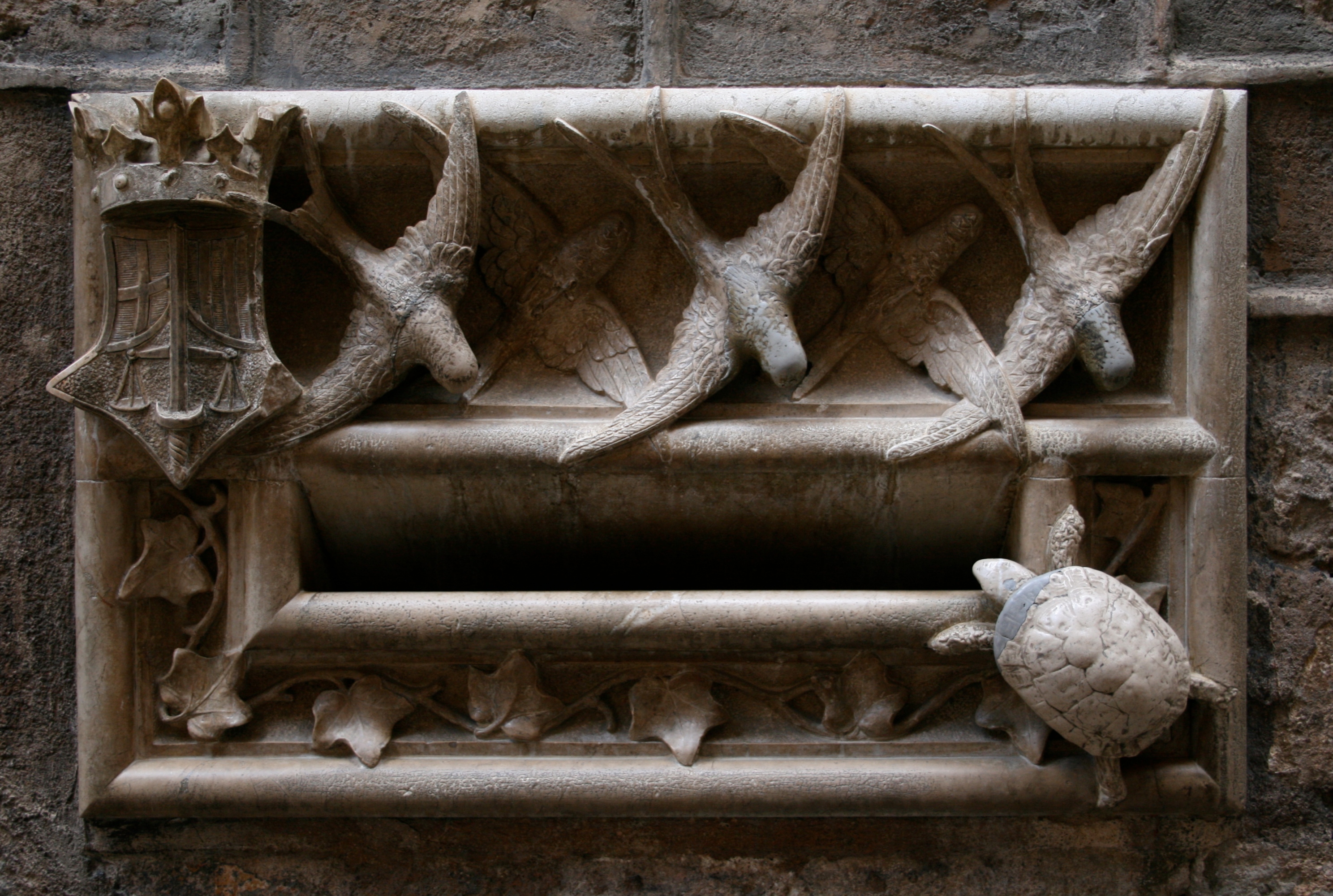
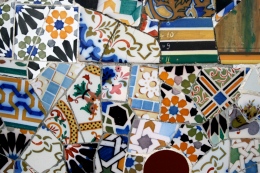
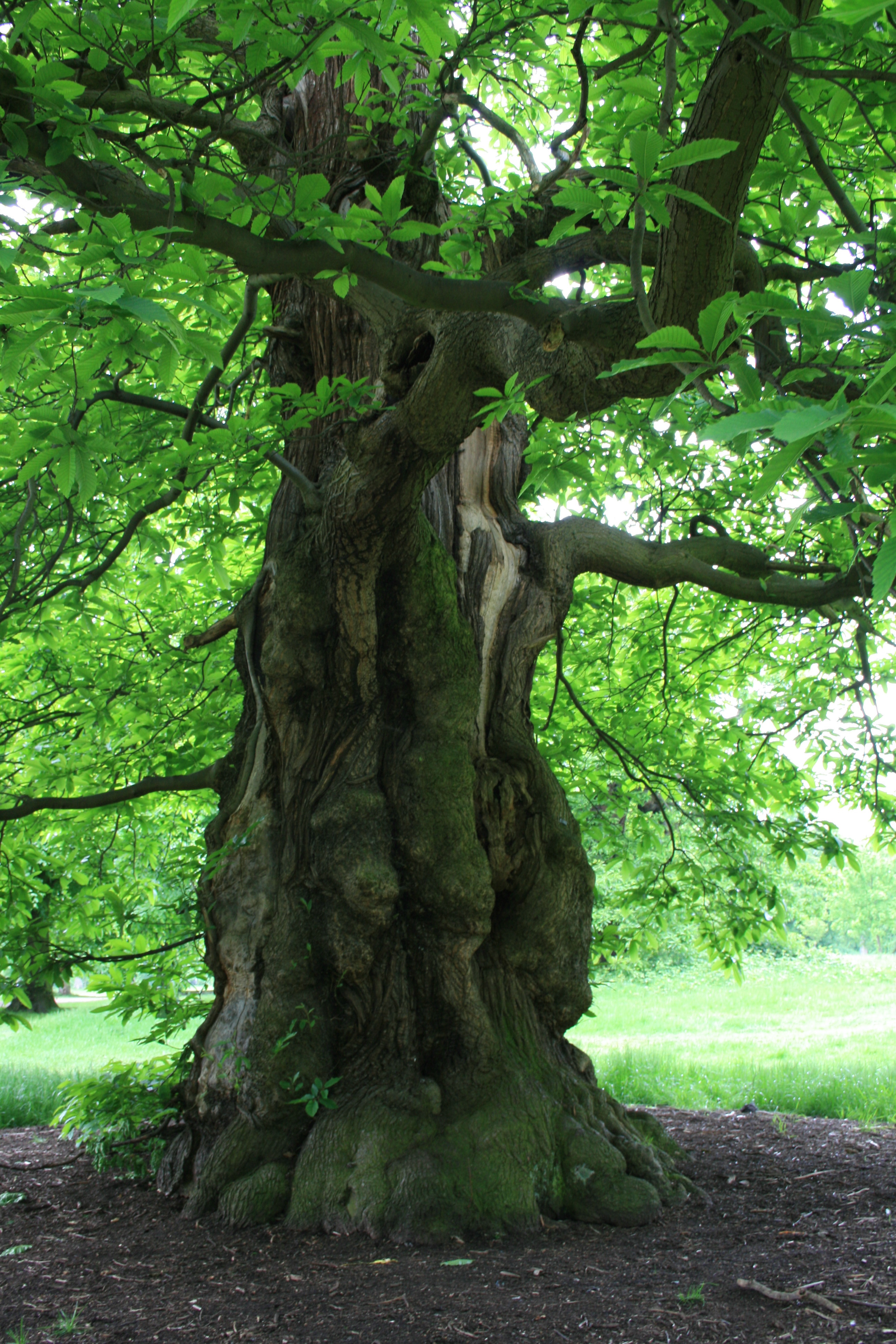
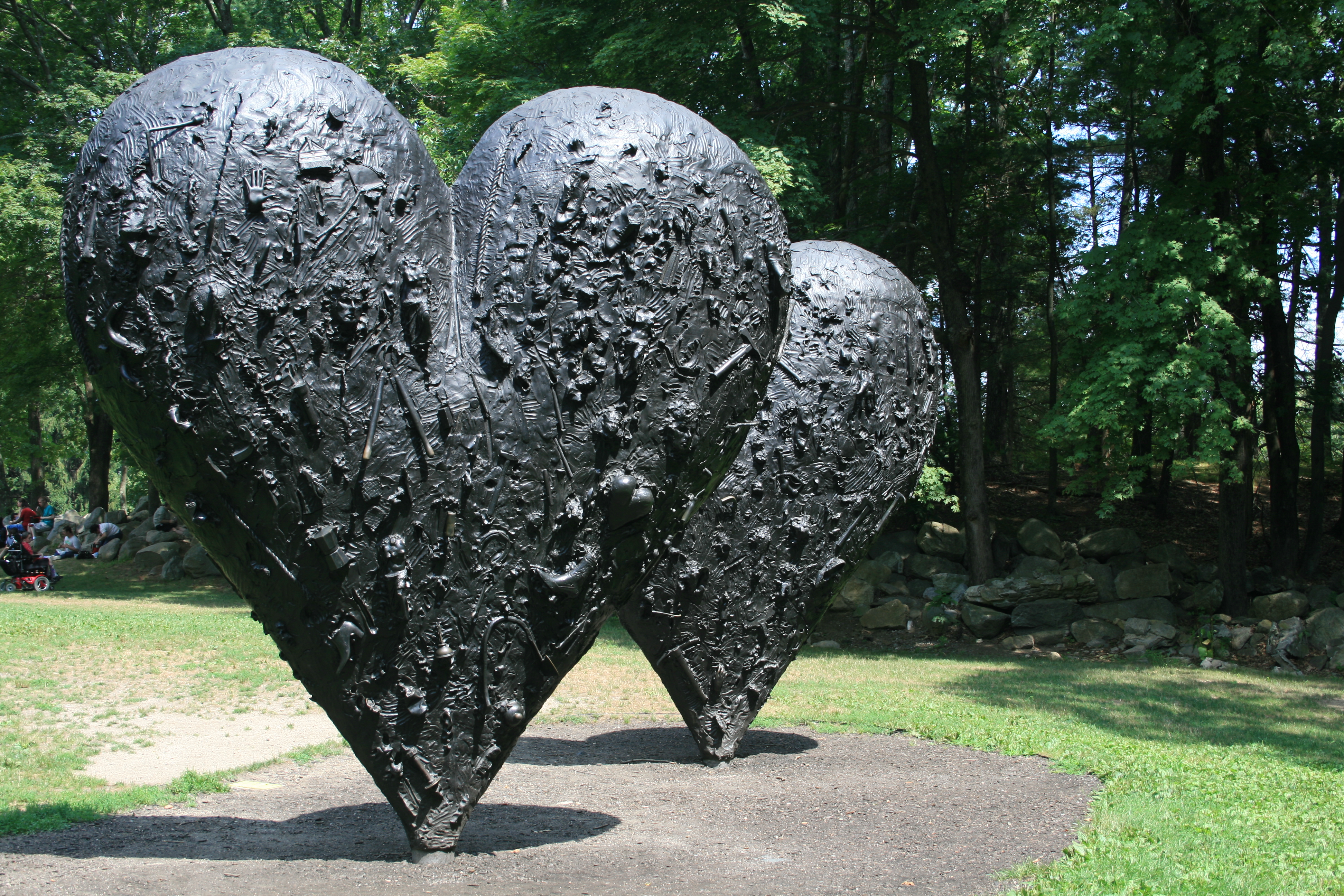
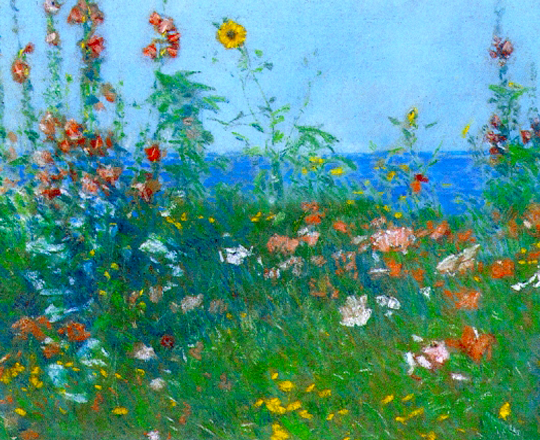





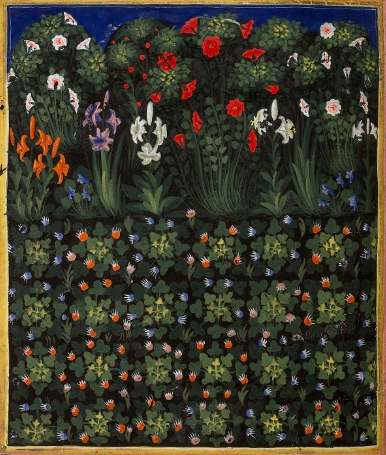
What an elegant design, especially when viewed from above. Thank you for the very informative post and all the pictures!
The garden is beautifully designed and I look forward to visiting again in a different season. Thank you for your positive comments, I value the feedback.
I just stumbled upon this blog today in a search for images. I’m very impressed with it’s apparent range and quality. (I use “assumed” only because I’ve quickly read only two posts.) I wasn’t even aware of this beautiful garden by Noguichi. Thank you for undertaking this task.
Thanks, it’s a work in progress and I am experimenting with merging my interest in landscape/garden history and contemporary environmental issues through a discussion of individual places. The Noguchi garden is often overlooked as one must schedule a visit in advance. If you are in Paris it is close to the Rodin Museum and Sculpture Garden which is also beautiful.